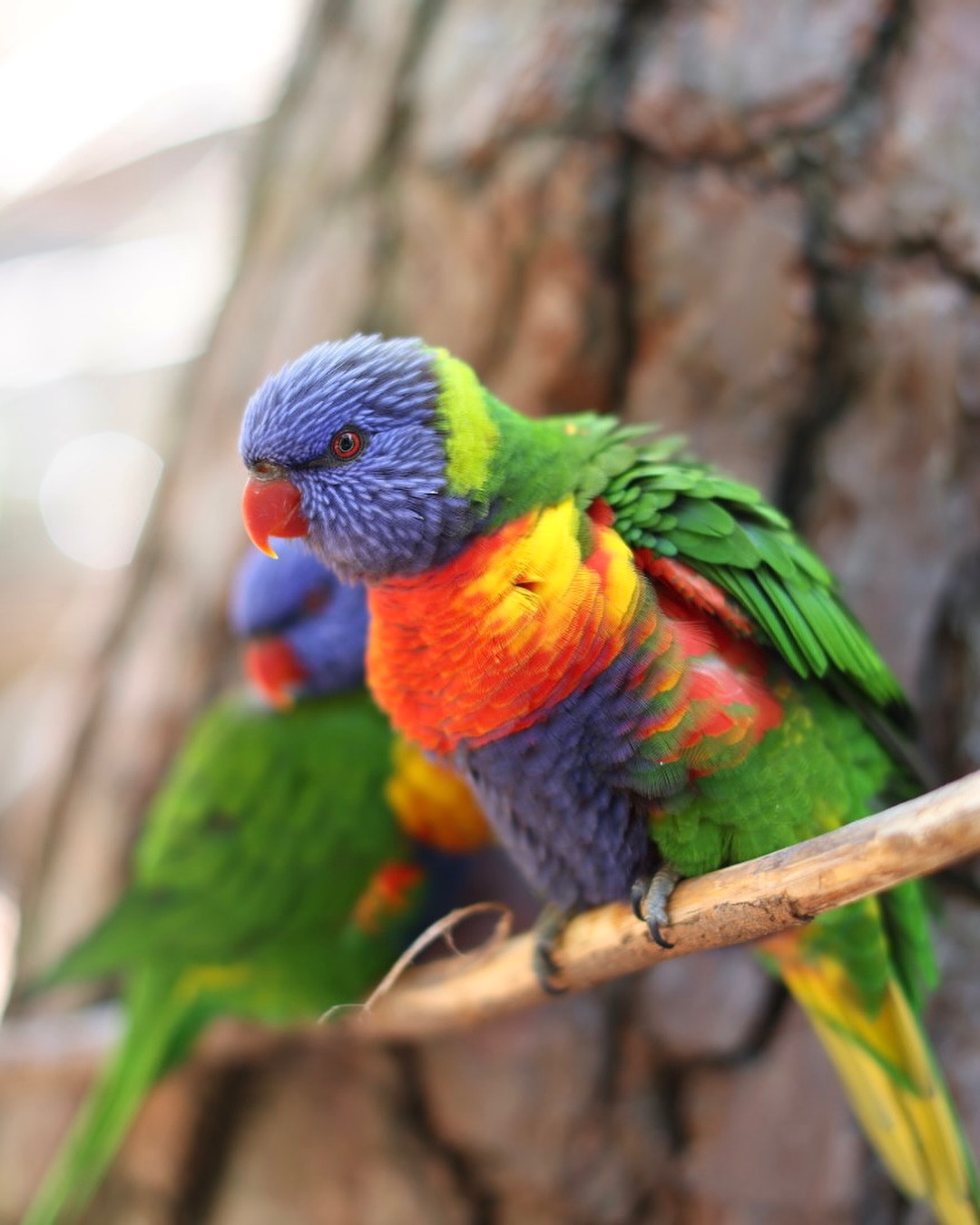- Overview of the Lorikeet Aviary: A Close Encounter with Exotic Birds
- The Biology and Behavior of Lorikeets
- Management Practices for Aviary Environments
- Conservation Efforts for Lorikeets and Their Habitats
- Visitor Engagement and Education Initiatives
One of the highlights of avian exhibits at many zoos is the Lorikeet Aviary, where guests can interact with some of the most colorful and lively feathered friends. This aviary is open daily from 10:00 AM until 3:00 PM, providing attendees with memorable experiences and rich opportunities for learning about these fascinating birds.
The Lorikeet Aviary represents a space dedicated not just to showcasing these birds, but also to educating the public about their ecology, behavior, and conservation needs. Visitors get a chance to get up close to the lorikeets, who are known for their engaging personalities and vibrant plumage. The exhibit encourages participation through feeding sessions and interactions, making it an excellent venue for connecting people with wildlife.
Lorikeets belong to the family Psittaculidae and are native primarily to Australia, New Zealand, and some parts of the South Pacific. These birds are easily recognized by their long, slender tongues, which are specially adapted for extracting nectar from flowers. As pollinators, lorikeets play a crucial role in maintaining the health of their ecosystems. This relationship between the birds and flowering plants highlights their importance in biodiversity and ecosystem stability.
Lorikeets exhibit a variety of social behaviors, demonstrating complex interactions within their flocks. They often engage in vocalizations, which serve various purposes including communication and mating rituals. Their social structures are vital for their well-being, as lorikeets thrive in cooperative environments where they can establish a hierarchy. Understanding these aspects of their behavior helps in designing effective management strategies for their care in aviary settings.
Management practices in aviaries are crafted to foster the physical and psychological health of the birds. Providing an environment that mimics their natural habitat can significantly reduce stress levels among captive lorikeets. Key elements include spacious habitats, diverse perches, and naturalistic vegetation. Nutrition is another vital component; a diet rich in nectar, fruits, and specially formulated pellets helps promote their health. Regular veterinary care is essential for monitoring the health and well-being of the birds, as captive conditions can lead to unforeseen health issues.
Moreover, breeding programs in controlled environments strive to ensure the genetic diversity of lorikeets. These programs often involve careful planning to pair individuals that will produce robust offspring. Additionally, the experience garnered through such initiatives is shared with wildlife conservation organizations to support broader conservation efforts aimed at protecting lorikeet populations in the wild.
The conservation of lorikeet populations is critical not just for their survival but also for the preservation of their habitats. Many species face threats from habitat destruction, climate change, and hunting. Organizations working in conservation actively participate in efforts to safeguard these ecosystems, promoting awareness regarding the importance of preserving native flora that lorikeets depend upon.
Education is another key component of conservation success. Zoos and aviaries serve as platforms for educating the public about wildlife preservation. Through engaging programs, visitors learn about the challenges faced by lorikeets and various species reliant on similar habitats. Interactive educational displays provide insights into their natural behaviors and environmental roles, facilitating a deeper connection between visitors and the birds.
In the Lorikeet Aviary, the emphasis on visitor interaction enhances the overall experience. Feeding sessions are not only entertaining but also educational, allowing visitors to learn about the dietary habits of these birds. The direct experience of feeding encourages appreciation and respect for wildlife, fostering a conservation mindset.
The enjoyment of observing these colorful birds can ignite interest in broader issues of wildlife preservation. When people are engaged with animals in such an intimate setting, they are more likely to appreciate the importance of protecting biodiversity. By participating in feeding, visitors become ambassadors for conservation, spreading awareness about the shared responsibility of protecting the environment.
Various initiatives encourage ongoing involvement from the community. Educational outreach programs focus on local schools and organizations, providing resources to teachers and students on the significance of lorikeets and their ecosystems. Such efforts widen the audience for conservation messages, emphasizing the essential role each individual plays in maintaining ecological balance.
Overall, the Lorikeet Aviary serves as a multifaceted hub for education, conservation, and community engagement. The daily interactions with these vivid birds enhance understanding and foster a connection with nature. Every visit to the aviary offers a unique opportunity to learn more about lorikeet biology, behavior, and conservation needs.
Encounters with these birds appreciate their beauty and highlight the urgent need to preserve their natural habitats. Through educational programs and active involvement, individuals can participate in ongoing wildlife conservation efforts. The success of these initiatives often rests on informed and inspired visitors who carry the message of wildlife protection into their communities.
As we immerse ourselves in the experience of the Lorikeet Aviary, we gain not just entertainment but also knowledge that can drive meaningful action in conservation. The vibrant colors and lively personalities of lorikeets captivate visitors, while the underlying messages of habitat preservation resonate long after the visit. Each encounter contributes to a growing movement that prioritizes the protection of wildlife and their ecosystems.
The journey into understanding lorikeets is filled with learning and inspiration. From their feeding habits to their social structures, each detail provides insight into the complexities of their existence. Through rigorous management of aviary spaces and dedication to education, the Aviary highlights the importance of conservation and the critical role everyone plays in the fight to protect these remarkable birds.
By appreciating and understanding the natural behaviors of lorikeets, visitors can advocate for conservation initiatives. Hosting interactive sessions encourages discussion, fostering a community invested in environmental stewardship. Thus, the Lorikeet Aviary not only represents a recreational escape but also serves as a significant platform for promoting wildlife conservation and education.
In participating in this experience, guests leave with a deeper awareness of the needs of lorikeets and the ecosystems they inhabit. This educational journey influences perceptions about wildlife and conservation, driving efforts that can lead to positive change. Engaging with feathered friends in the Lorikeet Aviary ultimately extends beyond enjoyment; it becomes an enduring commitment to protecting our planet’s biodiversity for future generations.
*****
Source Description
Always ready for the camera!👀📸 You can meet these feathered friends up close in the Lorikeet Aviary daily from 10:00am until 3:00 pm. 🦜

